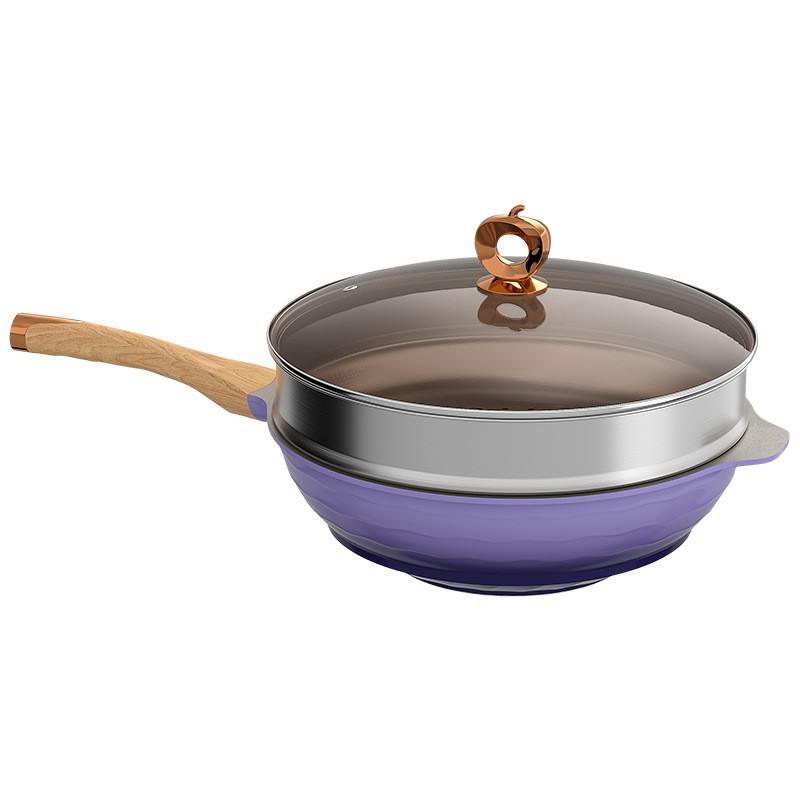2025-07-25
Choosing the right cookware is one of the most important decisions in any kitchen. With options ranging from stainless steel to cast iron, non-stick aluminum to copper, each material offers unique advantages and drawbacks. Among the growing list of options, titanium cookware is gaining attention — and for good reason. It offers a compelling mix of strength, safety, and convenience that many other materials simply can’t match.

When comparing titanium cookware to stainless steel, the differences are immediately clear. While stainless steel is durable and widely used, it can be heavy and sometimes prone to sticking. Titanium cookware, on the other hand, is significantly lighter and often includes a non-stick coating that makes cooking and cleaning much easier.
In contrast to cast iron, which requires seasoning and can rust over time, titanium cookware is rust-resistant and doesn’t require special maintenance. It’s ready to use straight out of the box and remains reliable for years. For busy individuals or those new to cooking, this low-maintenance feature is especially valuable.
Compared to non-stick aluminum pans, titanium cookware stands out for its health safety. Many non-stick coatings contain chemicals like PFOA or PTFE, which may degrade at high temperatures. However, most titanium cookware uses safe, ceramic-based coatings or titanium-infused layers that are free of harmful substances. This makes titanium cookware a better choice for those concerned about the health effects of their cooking surfaces.
Another area where titanium cookware excels is in versatility. It’s suitable for a wide range of cooking methods — including frying, sautéing, boiling, and baking — and can often transition from stovetop to oven. Whether you're preparing a quick stir-fry or slow-cooking a stew, titanium cookware offers flexibility without compromising performance.
The non-stick properties of titanium cookware also promote healthier eating habits. Because food doesn't cling to the surface, there's less need for oil, butter, or other fats during cooking. This can make a noticeable difference in calorie intake, especially for those pursuing specific dietary goals.
In terms of heat response, titanium cookware is often engineered with an aluminum or copper base. This combination ensures even heat distribution while maintaining the corrosion resistance and toughness of titanium. The result is cookware that heats up quickly and evenly, making cooking faster and more predictable.
Safety is another important factor to consider. Titanium cookware is non-toxic, hypoallergenic, and inert. Unlike copper, which can react with acidic foods, or aluminum, which may leach into food under certain conditions, titanium cookware remains completely stable. This gives peace of mind, especially for families with young children or individuals with food sensitivities.
Cost is one of the few challenges associated with titanium cookware. It tends to be more expensive than other types, but the investment is often justified by its durability and performance. With proper care, a good set of titanium cookware can last for many years, making it a cost-effective choice in the long run.
Beyond the kitchen, titanium cookware is popular among outdoor enthusiasts. Campers and hikers value its lightweight build and resistance to harsh conditions. It doesn’t corrode, scratch, or chip easily, making it a go-to option for cooking in the wilderness.
While there are many types of cookware on the market, titanium cookware offers a unique combination of benefits that set it apart. It’s light yet strong, safe yet high-performing, and stylish yet practical. Whether you’re replacing old pots and pans or building a kitchen from scratch, titanium cookware deserves serious consideration. It's more than just a cooking tool — it’s an upgrade to your entire culinary experience.